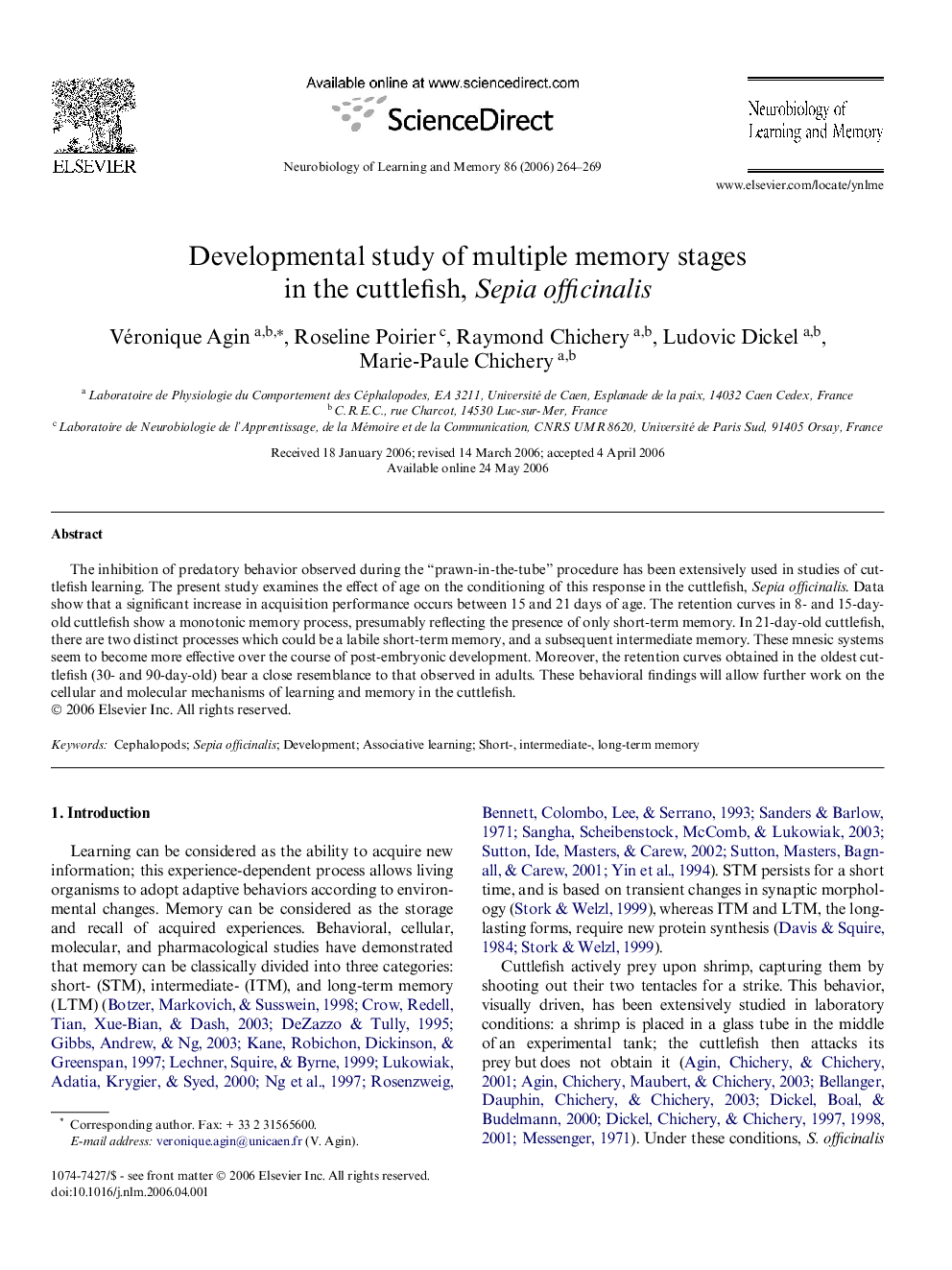| Article ID | Journal | Published Year | Pages | File Type |
|---|---|---|---|---|
| 937061 | Neurobiology of Learning and Memory | 2006 | 6 Pages |
The inhibition of predatory behavior observed during the “prawn-in-the-tube” procedure has been extensively used in studies of cuttlefish learning. The present study examines the effect of age on the conditioning of this response in the cuttlefish, Sepia officinalis. Data show that a significant increase in acquisition performance occurs between 15 and 21 days of age. The retention curves in 8- and 15-day-old cuttlefish show a monotonic memory process, presumably reflecting the presence of only short-term memory. In 21-day-old cuttlefish, there are two distinct processes which could be a labile short-term memory, and a subsequent intermediate memory. These mnesic systems seem to become more effective over the course of post-embryonic development. Moreover, the retention curves obtained in the oldest cuttlefish (30- and 90-day-old) bear a close resemblance to that observed in adults. These behavioral findings will allow further work on the cellular and molecular mechanisms of learning and memory in the cuttlefish.
